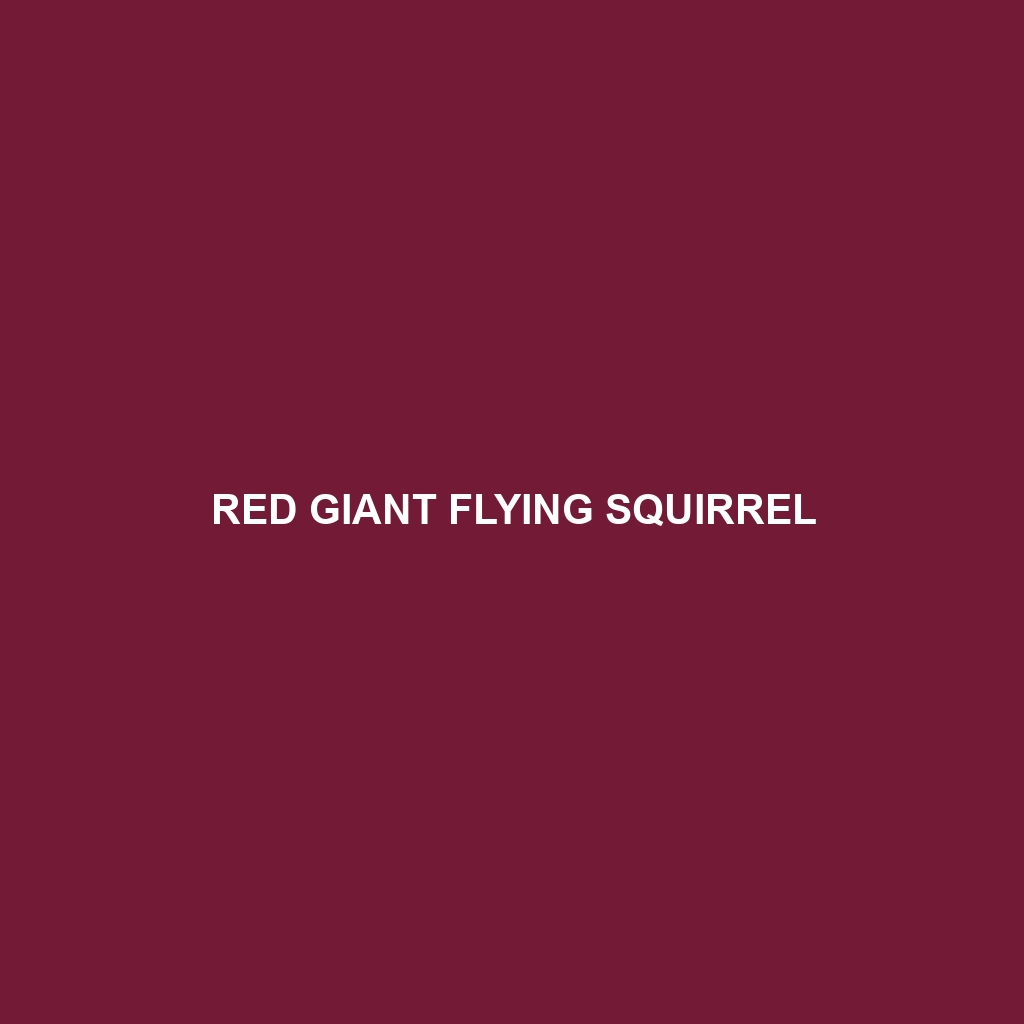Red Giant Flying Squirrel
Common Name: Red Giant Flying Squirrel
Scientific Name: Petaurista petaurista
Habitat
The Red Giant Flying Squirrel is primarily found in the dense, tropical and subtropical forests of Southeast Asia, particularly in countries such as India, Myanmar, Thailand, Vietnam, and Malaysia. These regions provide the ideal environment for this species, featuring tall trees and abundant vegetation that support their gliding lifestyle.
Physical Characteristics
This remarkable species can grow up to 50 cm (20 inches) in body length, with a tail that is equally long, aiding in their gliding abilities. The Red Giant Flying Squirrel has a striking reddish-brown fur coloration on its back, which transitions to a lighter hue underneath. Notable features include large, expressive eyes adapted for nighttime activity and a membrane that stretches from their wrists to ankles, enabling their impressive gliding capabilities.
Behavior
The Red Giant Flying Squirrel is predominantly nocturnal, meaning they are most active during the night. During the day, they can be found nesting in tree cavities or among dense foliage. They are known for their exceptional gliding skills, using large branches to launch into the air, gliding gracefully to the treetops below. Their social behavior often includes communication through vocalizations and scent marking.
Diet
As herbivores, the Red Giant Flying Squirrel primarily consumes fruits, nuts, and leaves. They play a significant role in forest ecology by aiding in seed dispersal as they forage for food. Their diet varies seasonally, with different food sources becoming available depending on the time of year, enhancing their adaptability.
Reproduction
Breeding typically occurs between June and September, with females giving birth to one to three young per litter. After a gestation period of around two months, the offspring are born blind and helpless, relying entirely on the mother during early life stages. Parental care is crucial, as mothers nurture their young until they are capable of independent living, usually after a few months.
Conservation Status
The Red Giant Flying Squirrel is currently classified as Vulnerable by the IUCN Red List. Habitat destruction due to logging, agricultural expansion, and urban development poses significant threats to their survival, highlighting the necessity for conservation efforts to protect their natural habitats.
Interesting Facts
- The Red Giant Flying Squirrel can glide over distances of up to 150 meters (approximately 490 feet) using their aerodynamic body.
- They possess a specialized patagium, which is the skin membrane allowing them to glide efficiently.
- These squirrels can be a part of the ecosystem by acting as prey for larger predators while also being crucial seed dispersers.
Role in Ecosystem
As a crucial component of their ecosystem, the Red Giant Flying Squirrel aids in maintaining the health of the forest through its role as a frugivore. By consuming and dispersing seeds, they contribute to forest regeneration and diversity. Their presence indicates a healthy forest environment, making them vital indicators of ecological well-being.
